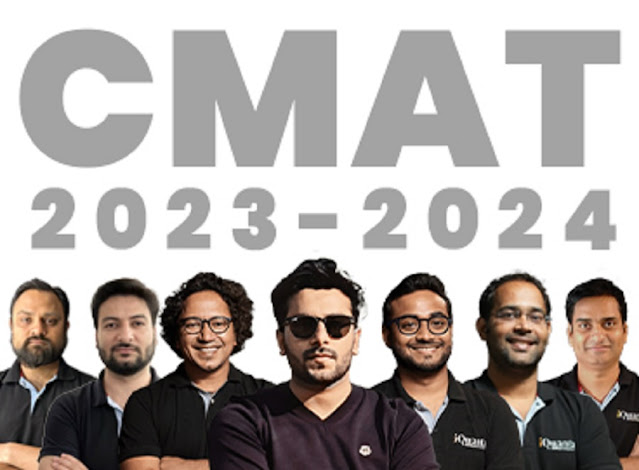In today's competitive world, a degree in management has become a coveted asset for those aspiring to climb the corporate ladder or establish their own entrepreneurial ventures. Among the myriad of entrance exams available to enter the world of business education, the Common Management Admission Test (CMAT) stands out as a prominent choice for many. This article delves deep into the world of CMAT, offering prospective candidates insights, tips, and a comprehensive understanding of the CMAT Course.
Understanding CMAT
The Common Management Admission Test, acronym CMAT, is a computer-based national-level entrance examination in India. Administered by the National Testing Agency (NTA), it's an essential criterion for admissions into various management programs in B-schools across the country. The test is designed to assess a student's aptitude in four key areas: Quantitative Techniques, Logical Reasoning, Language Comprehension, and General Awareness.
Why CMAT Holds Significance
There are several reasons why CMAT has become a preferred choice for management aspirants:
1. National Level Prestige: A good score in CMAT is a ticket to some of the country's premier management institutions. It's a recognition of a student's ability on a national platform.
2. Cost-Effective: In comparison to other management entrance tests, CMAT's registration fee is relatively lower, making it an affordable option for students from all economic backgrounds.
3. Simplicity and Efficiency: Being a computer-based test, CMAT offers a seamless examination experience. The chances of errors are minimized, and results are often quicker than traditional paper-based exams.
Dissecting the CMAT Syllabus
For those serious about cracking the CMAT, understanding its syllabus is paramount. Here's a breakdown:
Quantitative Techniques & Data Interpretation: This is not just about number crunching. It's about understanding data, interpreting it correctly, and applying mathematical logic to solve problems. Topics might range from basic arithmetic to advanced algebra and geometry.
Logical Reasoning: This section evaluates students' ability to think logically and make sense of complex patterns or sequences. It could include puzzles, deductions, logical links, and more.
Language Comprehension: Beyond just understanding English, this section tests a candidate's grasp of language nuances, vocabulary, grammar, and reading comprehension. It checks if a student can comprehend, interpret, and infer from written passages.
General Awareness: This isn't just about current events but also a broader understanding of the world, including history, geography, basic economics, and major global events.
Strategies for CMAT Preparation
While every student might have a unique strategy, some universal tips can enhance one's preparation:
1. Know the Pattern: Before diving into preparation, understand the exam pattern. Knowing the number of questions in each section, the marking scheme, and the time allocated can help in strategizing better.
2. Mock Exams: These are a replica of the main exam and are crucial. They not only help in understanding the kind of questions asked but also in managing time efficiently.
3. Stay Updated: For sections like General Awareness, it's essential to be updated with current events. Reading newspapers, and magazines, or even using mobile apps can be beneficial.
4. Group Study: Sometimes, studying in a group can help. It allows for the exchange of ideas, solving doubts, and even understanding complex topics through discussions.
5. Health is Wealth: It might sound clichéd, but a balanced diet and proper sleep can significantly impact preparation. A healthy mind and body can retain and recall information better.
Post CMAT: The Opportunities
Cracking the CMAT is just the beginning. A high score can lead to admission to some of India's top B-schools. These institutions offer not just a degree but an experience that can shape one's career. From learning from some of the best faculties to internships in top companies and networking opportunities with industry stalwarts, the possibilities are endless.
Furthermore, these institutions' ROI (Return on Investment) is commendable. Many students secure placements with attractive packages, ensuring that the money and time invested in the course are well worth it.
Conclusion
The CMAT course is more than just an entrance exam; it's a journey towards a promising career in management. With the right approach, dedication, and strategy, one can not only crack the exam but also lay the foundation for a successful career in the corporate world or the entrepreneurial realm. As the famous saying goes, "Where there's a will, there's a way." With determination and focus, the CMAT can be the stepping stone to your management dreams.

Comments
Post a Comment